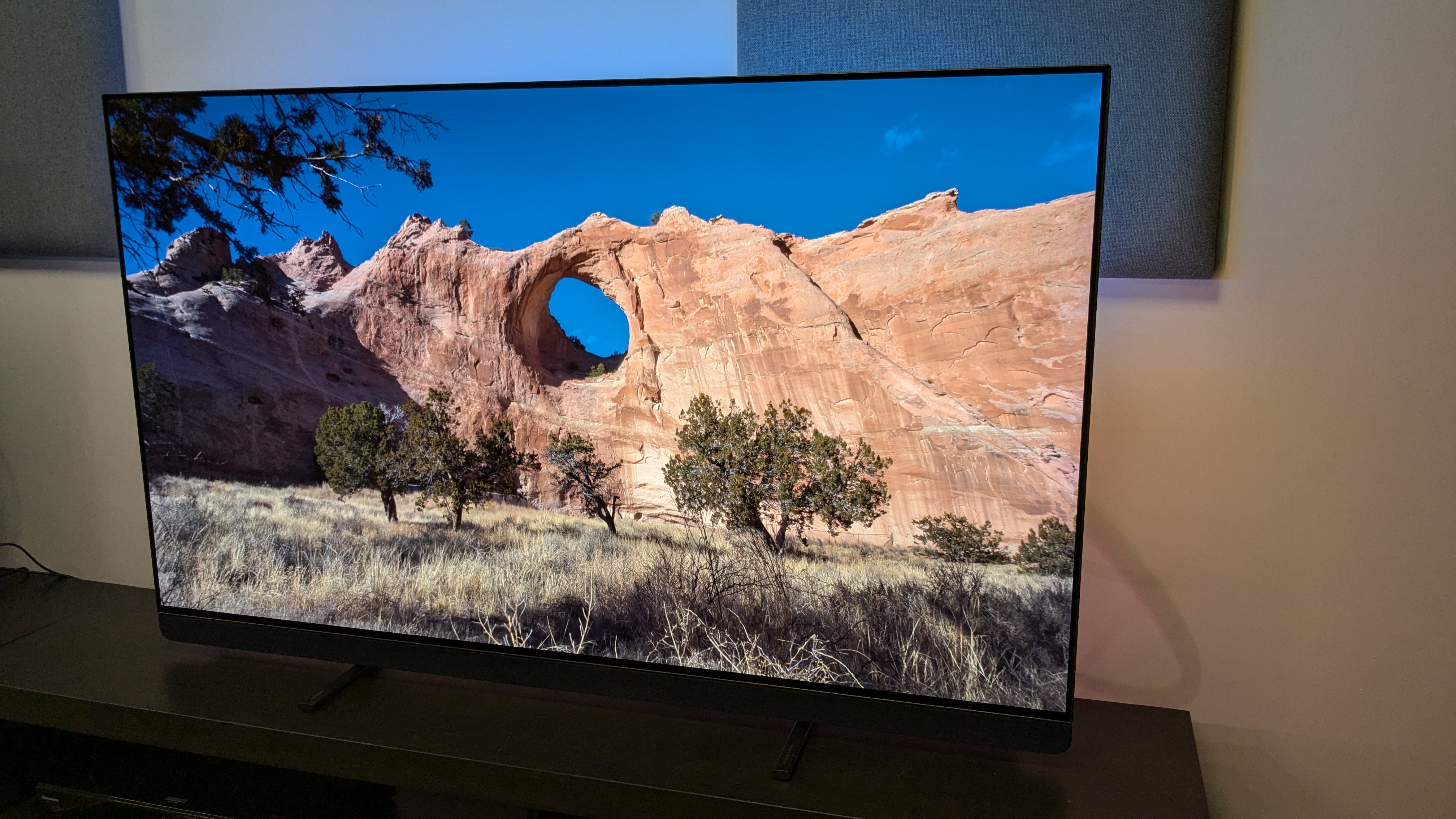
Philips OLED909 review: Two minute review
The Philips OLED909 covers pretty much every base, whether it’s picture, sound, gaming or design, and easily inserts itself into the running for the best TVs of the year. It may be pricier than some of the other best OLED TVs, but it’s a top-notch performer with plenty to like.
Picture quality is nothing short of spectacular on the Philips OLED909. Vibrant, accurate colours mix with superb contrast and deep black levels to create a well-balanced picture. Details and textures are lifelike and its motion handling is very good. It may not have the upscaling chops of the LG G4 or the same level of detail as the Samsung S95D, but the OLED909’s picture is dynamic, punchy and just downright stunning.
While some TVs have unimpressive built-in sound, the OLED909 easily competes with the best TVs for sound, such as the Sony Bravia 8. With a Bowers & Wilkins speaker system that provides real power, accuracy and plenty of immersion, you might not have to invest in one of the best soundbars. Dolby Atmos effects are a little lacking, but bass, dialogue clarity, and sound effects placement are all brilliant.
Ambilight, a Philips tech that projects coloured lights onto the wall behind the TV, gives the OLED909 an even greater sense of immersion than other TVs, especially when viewed in darker lighting conditions. The OLED909 feels every bit premium. The swivelling central stand found on the step-down Philips OLED809 is more useful than the OLED909’s metal feet, but that's my only real complaint about this otherwise beautifully designed TV.
Google TV serves as a solid, functional smart TV platform, but it’s a shame there’s no access to Freeview Play and its associated apps such as BBC iPlayer, ITVX, and Channel 4. (Pick up an Amazon Fire Stick or other streaming device to solve this issue.) But, there are plenty of picture and sound settings for people to experiment with, and navigation is user-friendly enough.
The OLED909 comes equipped with an excellent stock of what we look for in the best gaming TVs, including 4K 144Hz, Dolby Vision gaming, and VRR (in multiple formats). It only comes with two HDMI 2.1 ports, however, but this is one of the few downsides of an otherwise superb gaming TV with picture quality and performance to match its features.
The OLED909 undoubtedly sits at the pricier end of the TV market, with the 55-inch model I tested retailing for £1,999. This is significantly more expensive than mid-range OLEDs such as the LG C4 and even slightly more expensive than flagship OLEDs such as the Samsung S95D. But, the OLED909 offers a premium experience, so expect to pay the higher price that comes with that.
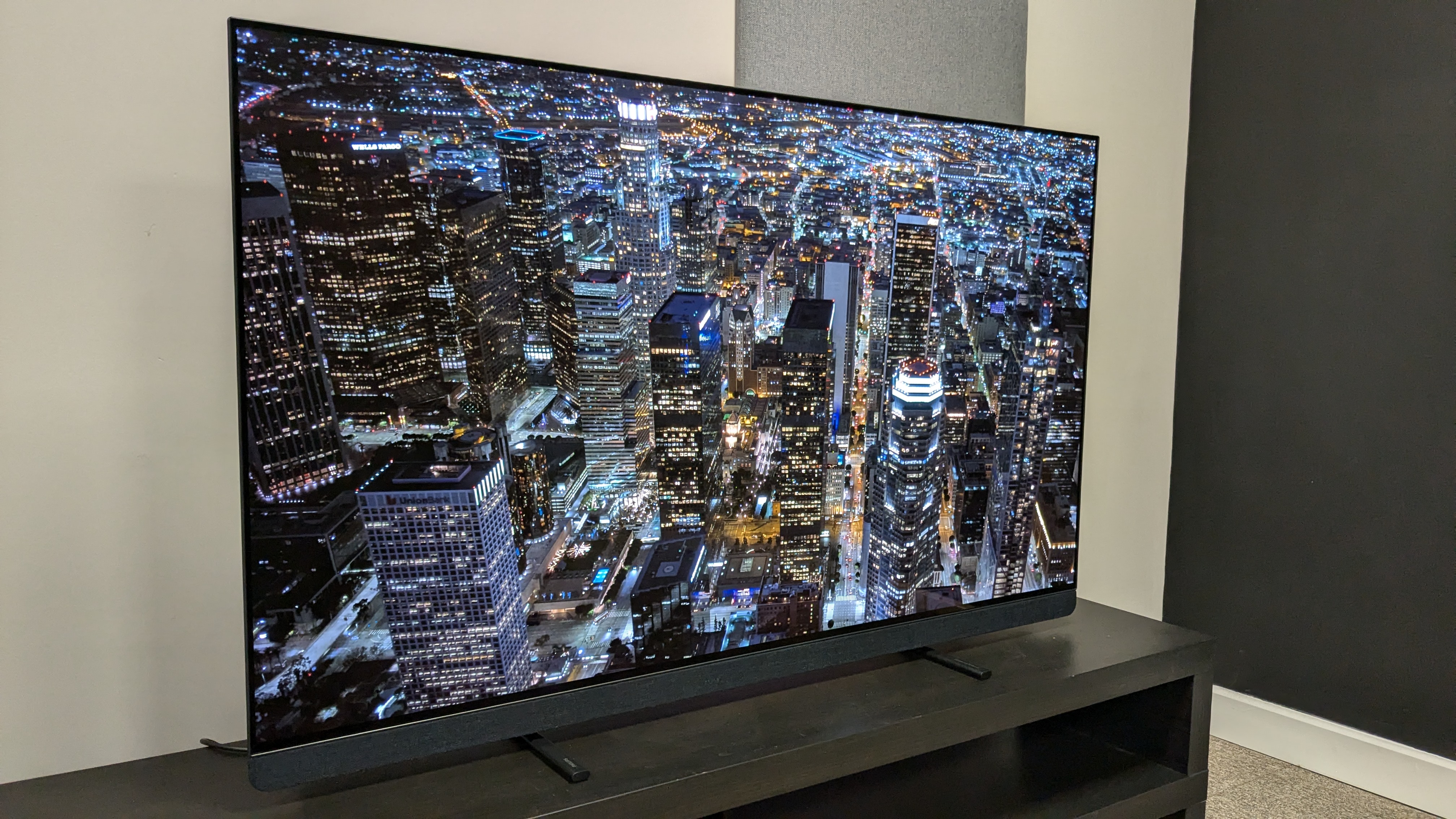
Philips OLED909 review: Prices & release date
- Release date: August 2024
- 55-inch: £1,999
- 65-inch: £2,499
- 77-inch: £4,499
The Philips OLED909 is the upper mid-range OLED series in Philips’ 2024 TV lineup, sitting above the OLED809 and OLED759 and below the flagship OLED+959. It is available in 55-, 65- and 77-inch sizes.
For the 55-inch model I tested, you’ll be looking to pay £1,999, which is pricier than both the flagship Samsung S95D and LG G4 OLED models, both of which are priced at roughly £1,799. Since its release, prices haven’t dropped as it’s only been around for a number of weeks, so we could see some discounts in the future.
Philips OLED909 review: Specs
Philips OLED909 review: Benchmark results
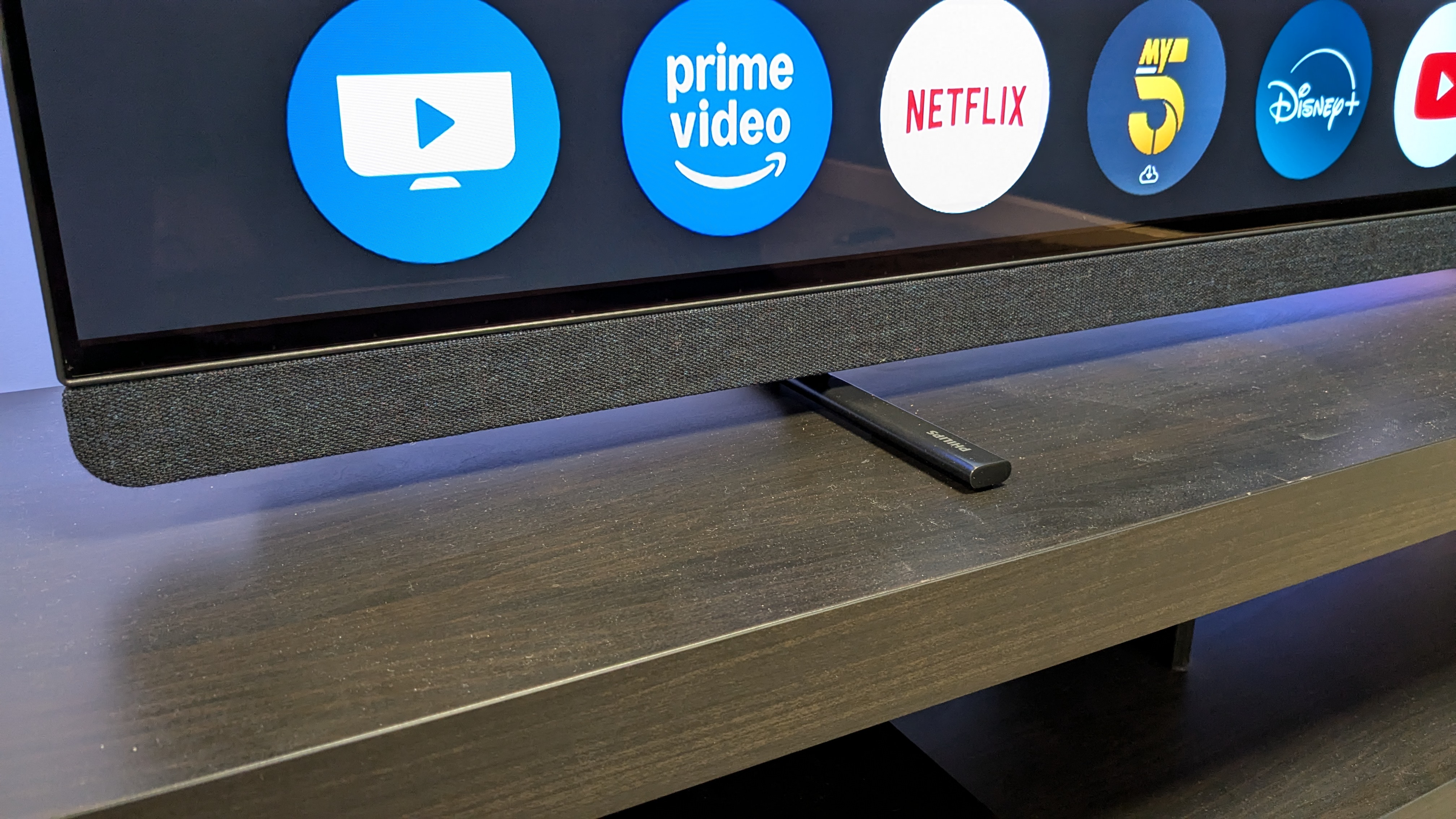
Philips OLED909 review: Features
- 2nd Generation Micro Lens Array (MLA) OLED panel
- Four-sided Ambilight
- Bowers & Wilkins 3.1-channel speaker array
The OLED909 is equipped with a second-generation MLA OLED panel – the same you’ll find in the LG G4 and the step-up Philips OLED959. This provides a brightness boost over both standard W-OLED models, such as the LG B4, and even OLED EX models, such as the LG C4 and the OLED909’s step-down sibling, the Philips OLED809.
The OLED909 supports both the Dolby Vision and HDR10+ high dynamic range formats. It also supports IMAX Enhanced content and has a picture mode compatible with Portrait Displays’ Calman colour calibration software for those who expect to have their TV professionally calibrated.
As with many Philips TVs, a prominent feature is Ambilight tech, which projects coloured lights onto a wall behind the TV. Ambilight can be customised in different ways, such as following the video or audio or displaying a single colour to create a mood. The OLED909 features the full four-sided version of Ambilight, with an extra strip at the bottom of the rear panel, as opposed to the three-sided Ambilight version found on the OLED809 and other step-down Philips TVs.
For audio, the OLED909 features a 3.1-channel speaker array made by Bowers & Wilkins, totalling 80W of power. Both Dolby Atmos and DTS:X audio formats are supported and it features an AI Sound mode, Dolby Bass Enhancement, Night Mode and Room Calibration.
Gaming is well covered on the OLED909, with support for 4K 144Hz, Dolby Vision gaming, VRR (including AMD FreeSync Premium and Nvidia G-Sync), HGiG and ALLM. There is also a new game bar that can be used to adjust gaming settings and even save customised profiles for each game or console. Like other current TVs not made by LG or Samsung, the OLED909 only features two HDMI 2.1 ports and not the full four favoured by gamers.
The OLED909 uses Google TV as its smart TV platform, with access to popular streaming apps such as Netflix, Prime Video, Disney Plus and more. There is no support for UK-based apps such as BBC iPlayer, ITVX and Channel 4, or Freeview Play and other associated apps, however.
- Features score: 4.5/5
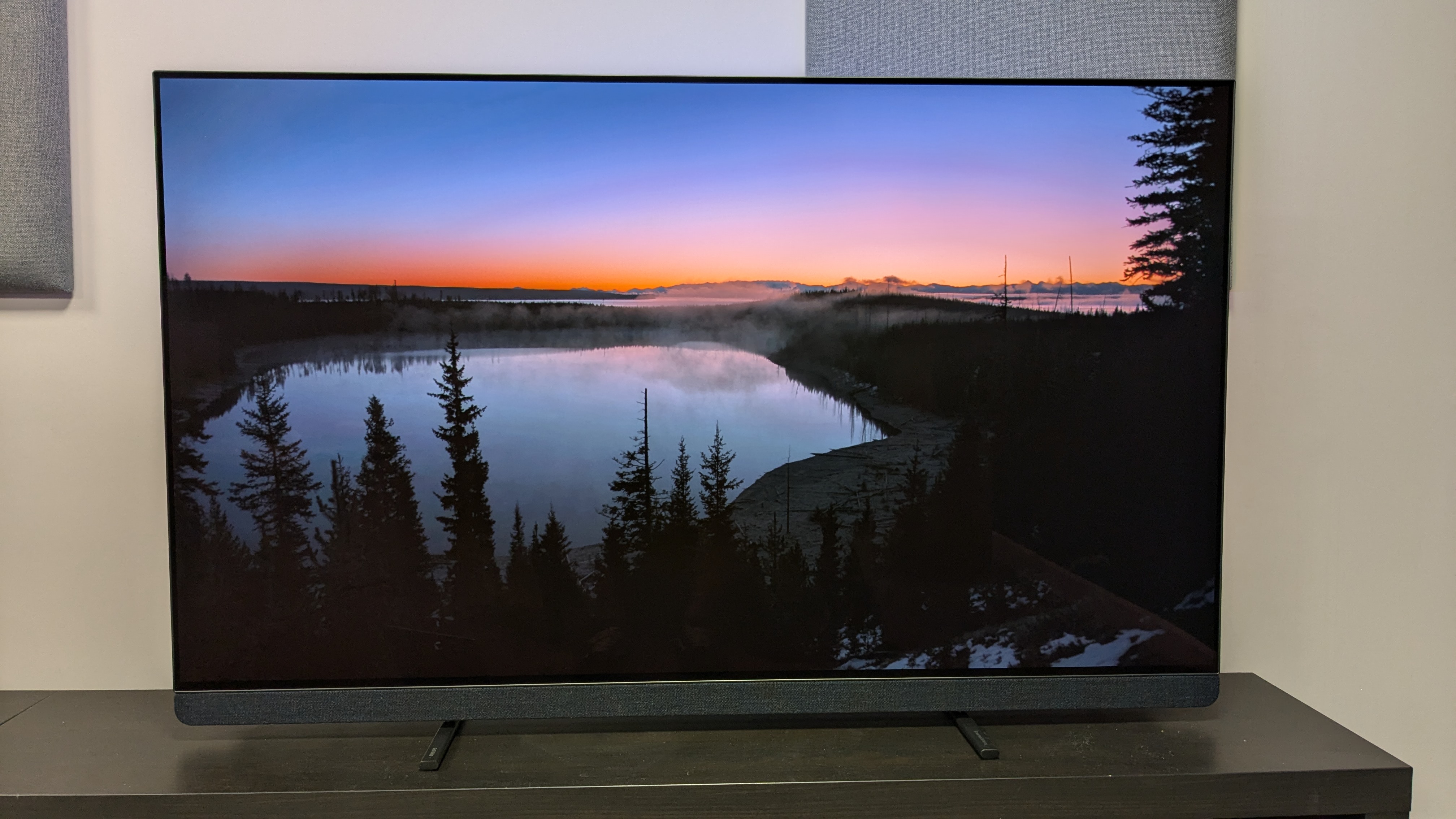
Philips OLED909 review: Picture quality
- Stunning, accurate colours
- Rich contrast
- Lifelike detail and textures
The OLED909’s second-generation MLA OLED panel yielded peak brightness results of 1,403 and 1,265 nits in Standard and Filmmaker Mode respectively when measured using a 10% HDR white window pattern. This is roughly 30% brighter than the step-down OLED809, which yielded results of 1,088 and 927 nits on the same tests. The LG G4, which uses the same panel, achieved a higher peak brightness in Filmmaker Mode, hitting 1,489 nits.
Full-screen brightness measured on a 100% HDR white window pattern was 264 and 249 nits in Standard and Filmmaker Modes respectively, which is only marginally lower than the LG G4’s 259 nits Filmmaker Mode result. The Samsung S95D, which uses a QD-OLED panel, achieved a result of 318 nits on this same test. Note that these full-screen numbers pale in comparison to the best mini-LED TVs, which easily achieve over 500 nits – a factor due to the automatic brightness-limiting controls used by OLED TVs to protect the display panel.
Starting with lower-resolution TV shows to evaluate the OLED909’s upscaling, textures were on the fuzzy side, but it was a marginal improvement over the Philips OLED809 when I tested it. High-definition movies and TV shows looked cleaner and had more detail, though the OLED909 did not reach the same level as other OLEDs such as the Samsung S95D.
Watching a 4K Dolby Vision stream of Star Wars: The Last Jedi via Disney Plus, reds in the throne room fight scene had a bold, vivid look. HDR highlights in lightsabers and flames popped against the darker floors and Ambilight added an extra layer, with the bold reds surrounding the screen. Crucially, these colours also maintained a natural quality but were still eye-catching. Textures and details in clothing and skin were also lifelike, and black levels looked accurate.
The OLED909’s measured colour gamut coverage was 98.3% (against the claimed 99%) and 74.04% for UHDA-P3 and BT.2020 colour spaces respectively, both of which are excellent results.
Measuring the OLED909’s colour accuracy, its Delta-E values (the margin for error between the generated test pattern and what appears on screen) was 1.1 in Filmmaker Mode, which is a phenomenal result (we look for anything below 3).
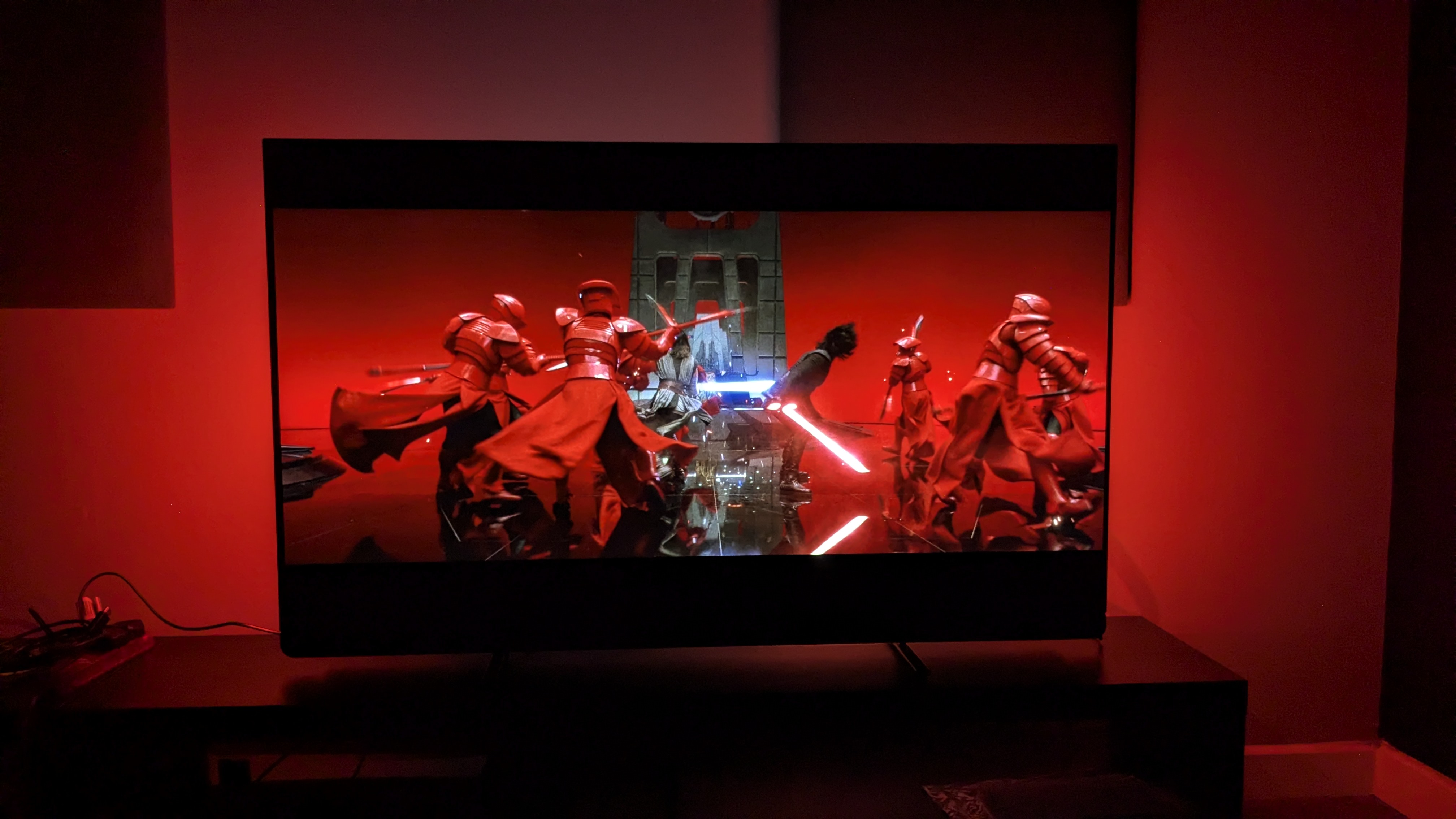
The next movie I watched was The Batman on 4K Blu-ray, primarily to test the OLED909’s contrast and black levels. With the TV’s Dolby Vision Filmmaker Mode active, the OLED909 delivered rich contrast with deep blacks during the opening crime scene, where details in the room and clothing were well-defined even during low-brightness sequences. While the OLED909 did a good job of handling reflections from overhead lights in our testing lab, The Batman looked best in dimmed lighting conditions.
Watching Oppenheimer, the OLED909 displayed the black and white scenes with a high level of accuracy, striking a good balance between the black and white tones and grey ones in between. Blacks looked rich and white highlights were bright without being overblown.
La La Land is filled with bright colours throughout and the OLED909 once again demonstrated brilliant colour reproduction, particularly in the opening and closing dance numbers which are filled with yellows, blues, greens and other colors. In the ‘Lovely Night’ scene, the OLED909 did a great job displaying Mia’s vibrant yellow dress against the dark background. The OLED909 displayed accurate film grain levels in Filmmaker Mode, though this can also be reduced if preferred by increasing Noise Reduction in the picture settings.
Motion handling was generally very good on the OLED909. Watching sports including Football and Rugby, there was minimal judder or blur with motion settings turned off, but, there are preset motion modes and customisable motion smoothing settings for those who like a smoother look. For sports, I generally found Personal (which, out-of-the-box, resembles the Standard picture modes on other sets) to be the best picture mode, while the Crystal Clear mode oversaturated colours.
Watching Top Gun: Maverick, the OLED909 generally handled twisting camera shots and high-action sequences well in Dolby Vision Filmmaker Mode, but I did see some judder with motion settings turned off in panning shots, including a scene where Maverick rides his bike into the air base. Motion wasn’t as well handled by the OLED909 as on other OLEDs such as the Samsung S95D, but it was for the most part pretty smooth.
I also saw some black crush in darker scenes in Top Gun: Maverick , resulting in shadow detail loss that wasn’t present when watching The Batman. Facial textures in close-ups, however, demonstrated the OLED909’s natural rendering of details.
- Picture quality score: 4.5/5
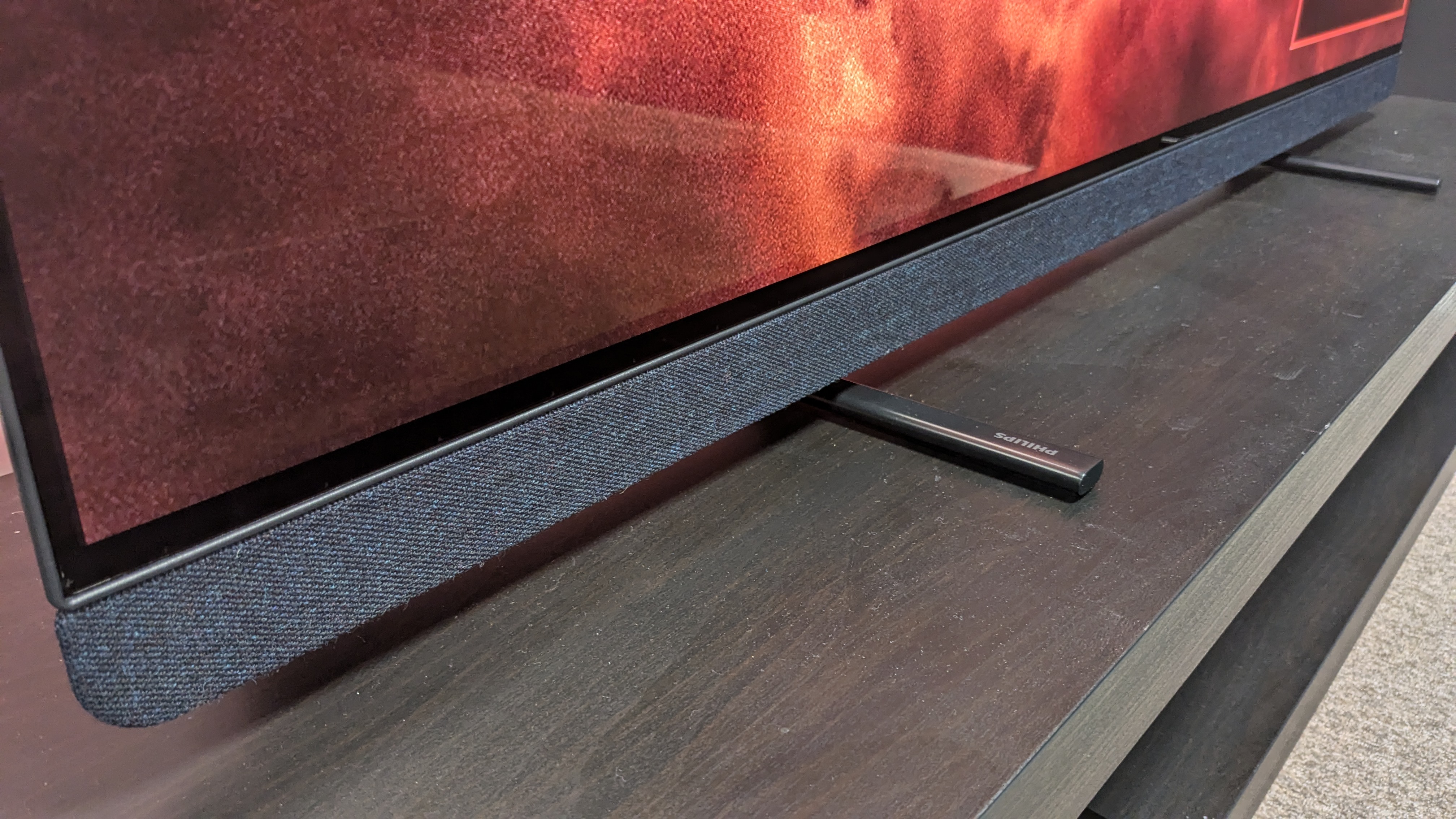
Philips OLED909 review: Sound quality
- External speaker adds more power
- Excellent sound placement
- Punchy bass and clear dialogue
The OLED909’s built-in sound quality is brilliant and while it won’t provide the same cinematic impact as the best Dolby Atmos soundbars, many people will be pleased with its level of audio quality. Entertainment is the best out-of-the-box sound preset, but Personal allows for extensive customisation for those looking to experiment.
Aided by an external speaker, the OLED909’s built-in sound system, which is made by audio powerhouse Bowers & Wilkins, delivers powerful, direct, and immersive sound. While watching the chaotic Batmobile chase scene from The Batman, the OLED909 offered punchy bass that captured the rumble of the Batmobile’s engine while also delivering crystal-clear dialogue. Placement of sound effects around the screen was precise and accurate, with every bullet, screeching tyre and crunching crash coming from the area on screen where you’d expect, and the sound even extended beyond the screen’s borders.
Moving to La La Land, the OLED909 reproduced the bombastic, bright jazzy score of opening number ‘Another Day of Sun’ with excellent detail and balance. Even in more subtle and delicate songs such as ‘City of Stars’, piano and soft strings sounded clear, and subtle effects such as closing doors or tapping shoes could be heard during more lively dance sequences.
While there are many positives, the OLED909 struggles with Dolby Atmos height effects, with the driving rain in The Batman and overhead jets in Top Gun: Maverick sounding less pronounced than on the best TVs for sound such as the Sony Bravia 8. Still, for a 3.1-channel setup, the OLED909’s built-in sound is very impressive.
- Sound quality score: 4.5/5
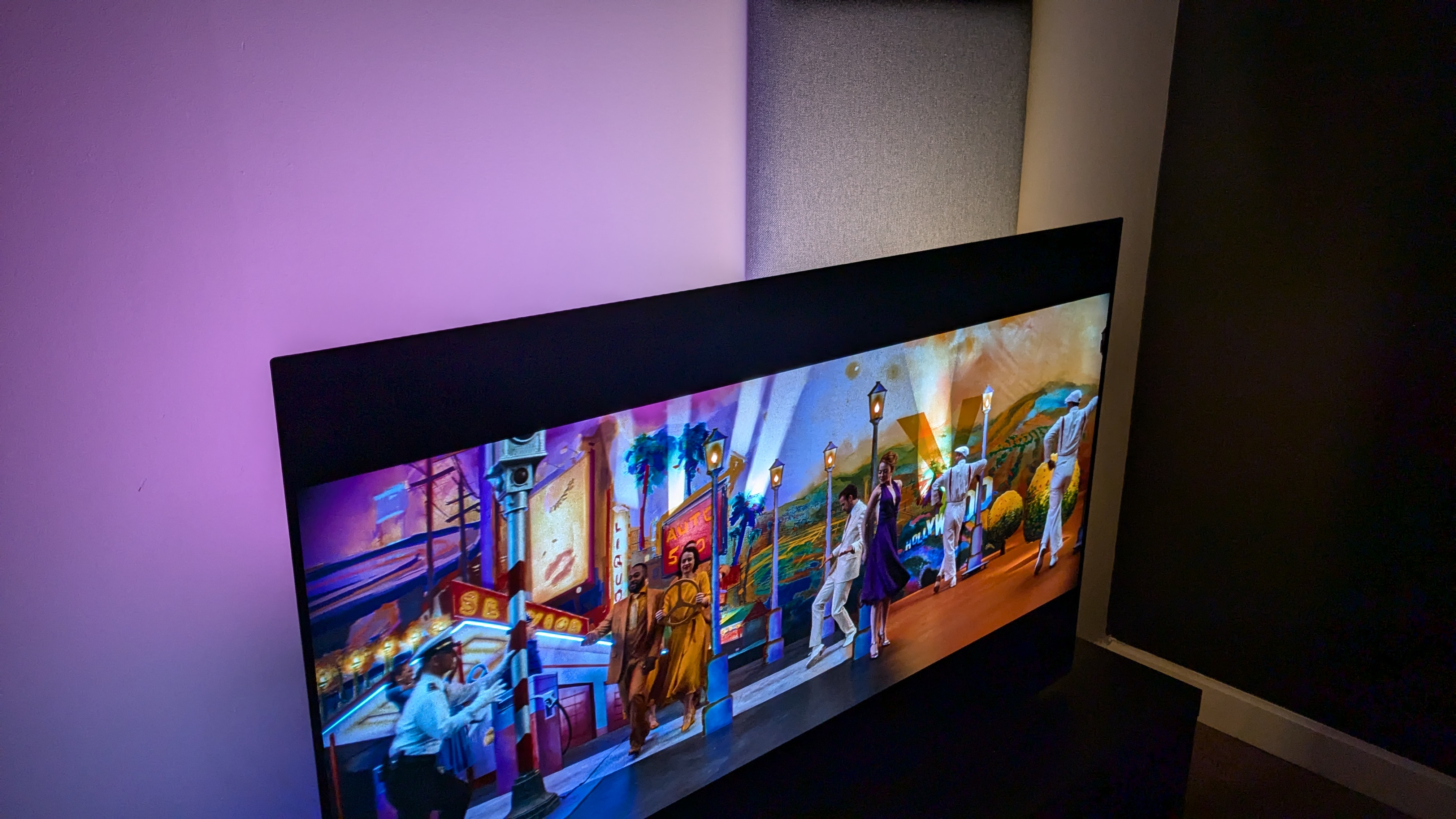
Philips OLED909 review: Design
- Spectacular, four-sided Ambilight
- Excellent build quality
- Useful central stand
The OLED909 features a four-sided version of Philips’ Ambilight tech and while Ambilight may be a polarising feature in the TV world (it can also be switched off), I love it. I found that Ambilight added to nearly every scene I watched, particularly those with bold colours such as Star Wars:The Last Jedi and La La Land.
Aside from Ambilight, the OLED909 is a premium-looking, solidly built TV with a trim profile apart from the sections that house the Ambilight LED modules. It has a near bezel-less screen to allow the picture full space and the external speaker is covered in a grey fabric that adds to the OLED909’s premium look.
The OLED909 comes with two weighty and solidly built metal feet, as opposed to the useful central swivel stand found on the OLED809. My preference is for the OLED809’s stand, but this is a minor gripe.
The supplied remote is the same one found with the OLED809, and it sets the standard for TV remotes. Made of a black, burnished metal material that reflects the OLED909’s premium price, it can be recharged via USB-C or the rear solar panel and its buttons light up when in use – perfect for those who view in dark conditions.
- Design score: 4.5/5
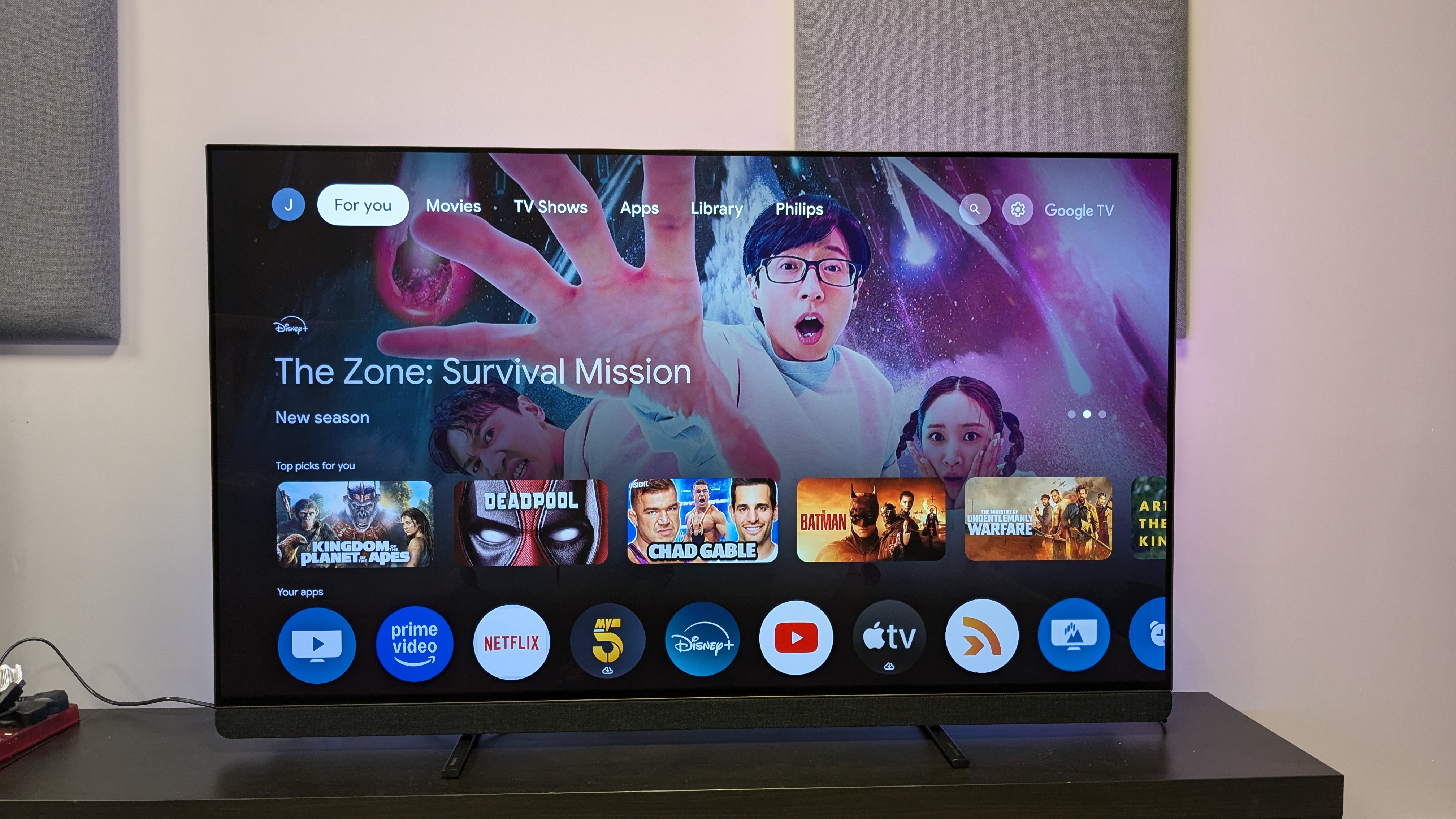
Philips OLED909 review: Smart TV & menus
- Google TV smart TV platform
- No Freeview Play apps
- Easy to navigate menus
The OLED909 uses Google TV as its smart TV platform. Apps such as Netflix, Prime Video, Disney Plus and Apple TV+ are all included, but there is no Freeview Play or its associated UK-based apps such as BBC iPlayer, ITVX, and Channel 4. These can be accessed via an external streaming device such as an Amazon Fire Stick for those who miss them.
Google TV requires a sign-in to a Google account to use apps not already built-in to the TV, but this is rewarded with more tailored recommendations and even quicker navigation to the shows you’re watching via the home screen. There is no escaping the large banner ad at the top of the home page, however, which does take up a good portion of the screen.
There are a good number of settings to adjust the OLED909’s picture and sound for those who like to tweak, with the number of sound settings on offer being more extensive than on other TVs. Menu navigation is easy enough with a Quick Menu in the top corner during viewing, although it doesn’t feel quite as fluid as LG’s webOS.
- Smart TV & menus score: 4/5
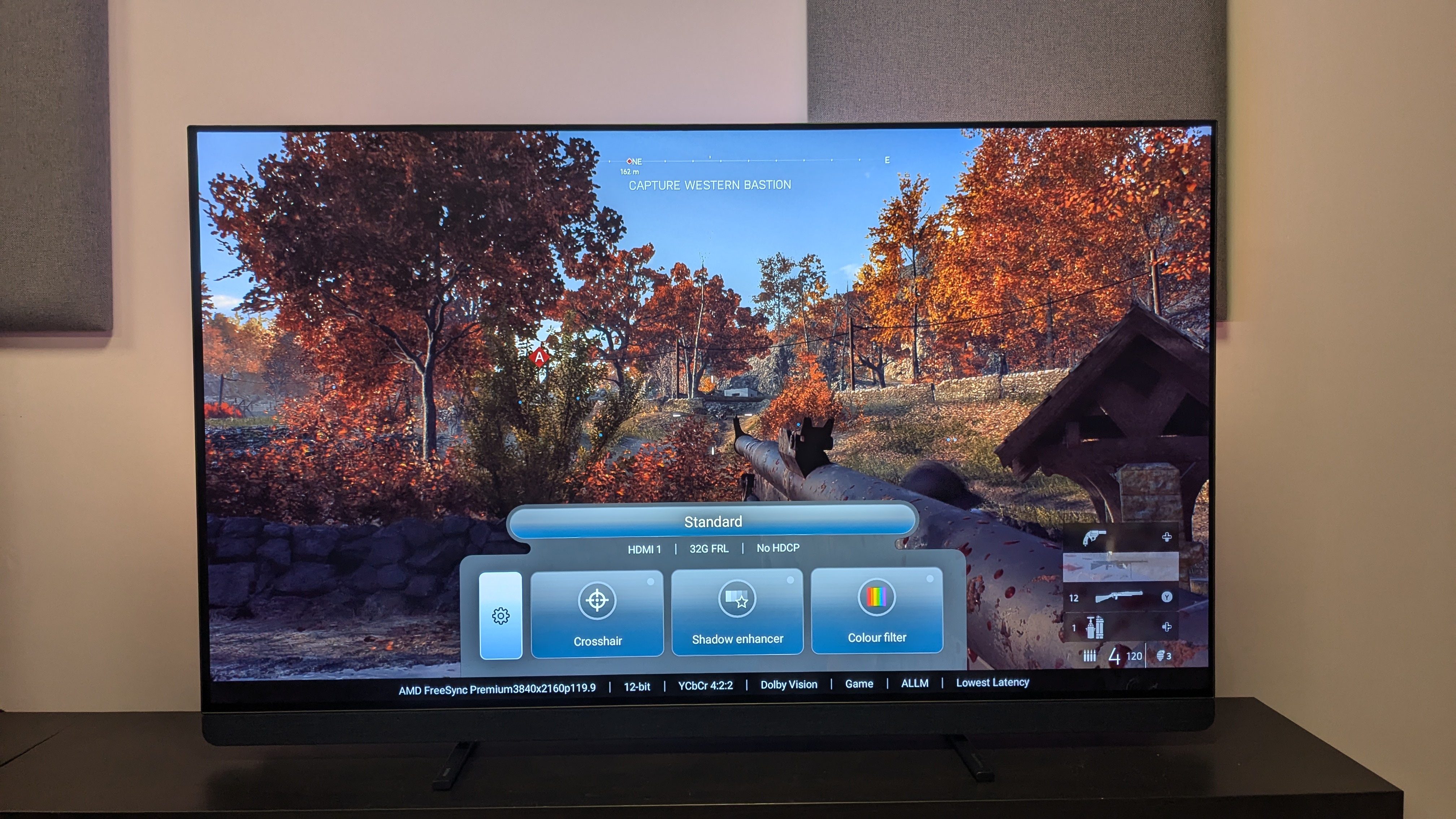
Philips OLED909 review: Gaming
- 4K 144Hz, Dolby Vision gaming, and VRR
- 12.6ms input lag time
- Only two HDMI 2.1 ports
The OLED909 is well stocked for gaming and supports up to 4K 144Hz refresh rate, VRR (both AMD FreeSync Premium and Nvidia G-Sync formats included), HGiG, Dolby Vision gaming and ALLM. It also features a game mode and game bar where settings can be adjusted and saved to individual profiles for later use or with particular games or consoles. The OLED909 does, however, only have two HDMI 2.1 ports as opposed to the four found on LG and Samsung TVs.
In terms of performance, the OLED909 is responsive and feels smooth, even during graphically intense sequences. Playing Battlefield V on Xbox Series X at 120fps, gaming was fast-paced and fun, with target selection and camera adjustments feeling snappy and accurate. The OLED909’s measured input lag was 12.6ms, which is a good result, though it doesn't match some of the best 120Hz TVs such as LG’s OLEDs, which all hit 9.1ms in Boost Mode, or Samsung’s sets, which often hit below 10ms.
The OLED909’s handling of graphics is impressive too, displaying bold colours, well-defined textures and plenty of detail along with rich contrast and black levels. Environments, weapons and facial features all get an added sense of depth thanks to the OLED909’s picture prowess.
- Gaming score: 4.5/5
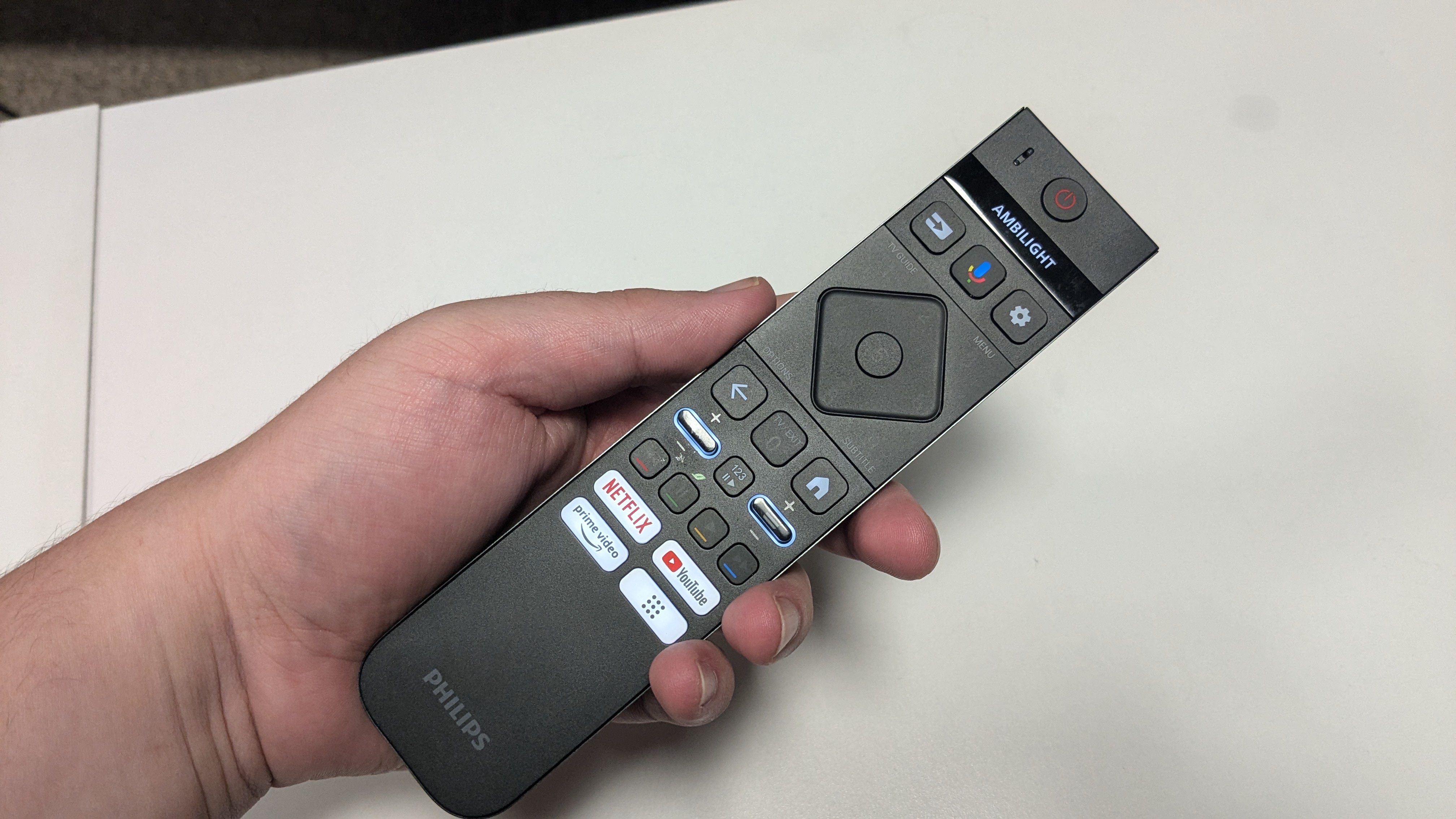
Philips OLED909 review: Value
- Pricier than some rival OLEDs
- Premium design
- Good features and picture quality for the money
The OLED909 is undoubtedly a premium TV, with the 55-inch model I tested priced at £1,999. This puts it above flagship OLEDs such as the Samsung S95D and LG G4, both of which are priced at £1,799. You do get the benefit of Ambilight on the OLED909, but miss out on a full four HDMI 2.1 ports for gaming.
The OLED909 nonetheless delivers a premium viewing experience across the board, from its stunning picture, dazzling Ambilight, plentiful gaming features and immersive built-in sound, so you should expect to pay a premium price.
Other TVs such as the TCL C855 and Hisense U8N, two fantastic mini-LED TVs that offer excellent features and performance for less, demonstrate better value, but the OLED909 does mostly justify its price tag, even if that price may be too much for some people.
- Value score: 4/5
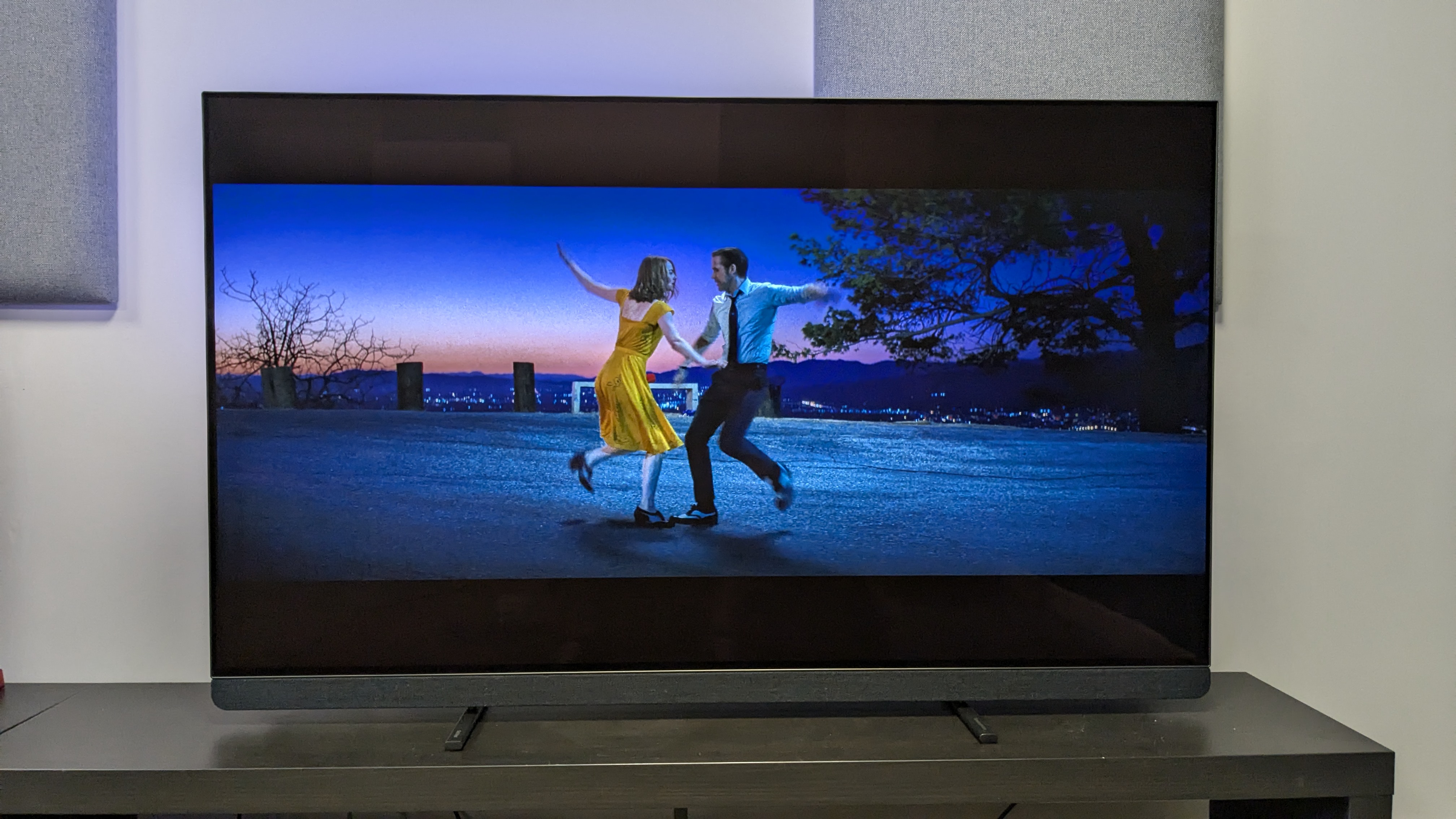
Should I buy the Philips OLED909?
Buy it if...
Don't buy it if...
Also Consider
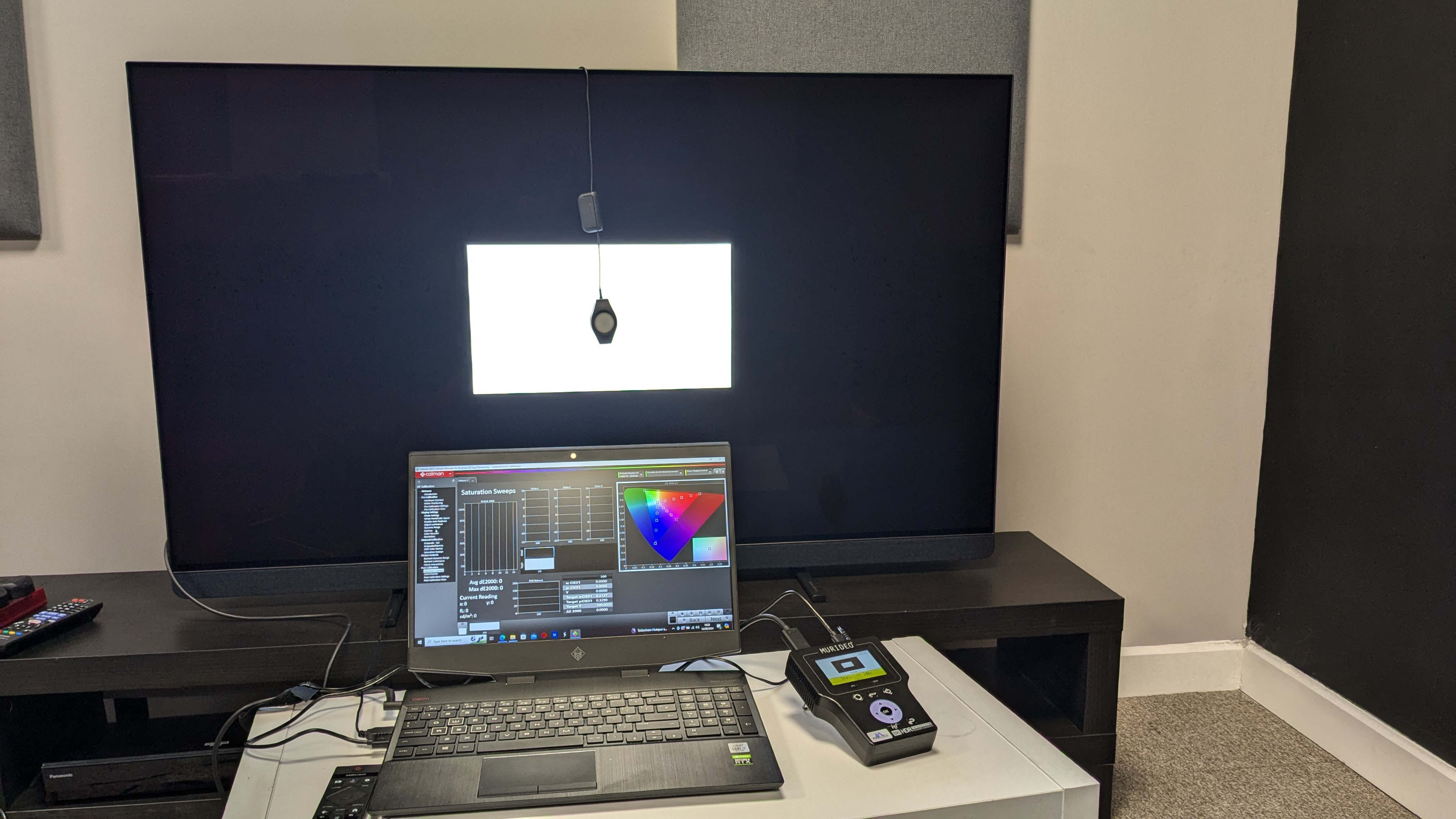
How I tested the Philips OLED909
- Tested with both SDR and HDR sources
- Viewed in different lighting conditions
- Objective measurements recorded using Portrait Displays Calman color calibration software
I began my testing of the OLED909 with casual viewing to establish its most accurate picture mode – Filmmaker Mode in this case.
After, I began my critical viewing using SDR sources such as broadcast TV and standard-definition, as well as high-definition TV shows and movies, 4K Blu-ray and 4K streaming. I used these to test the OLED909's colour, contrast, shadow detail, black level, motion handling and upscaling.
For 4K Blu-rays, I used the Panasonic DP-UB820 4K Blu-ray player, watching the same reference scenes I use in all of my testing. For gaming testing, I used an Xbox Series X.
I then moved on to objective testing, where I used specialised equipment to measure the OLED909's SDR and HDR brightness on a variety of window patterns ranging from 1-100%. I also measured colour and greyscale accuracy and HDR colour gamut coverage.
I used a test pattern generator and colourimeter to take these results and recorded them with Portrait Displays' Calman color calibration software.
I also tested the OLED909's input lag using a Leo Bodnar 4K HDMI Input Lag Tester.
You can read an in-depth overview of how we test TVs at TechRadar at that link.
- First reviewed: August, 2024
- Read TechRadar's reviews guarantee
!["[T]he First and Fifth Amendments Require ICE to Provide Information About the Whereabouts of a Detained Person"](https://images.inkl.com/s3/publisher/cover/212/reason-cover.png?w=600)






